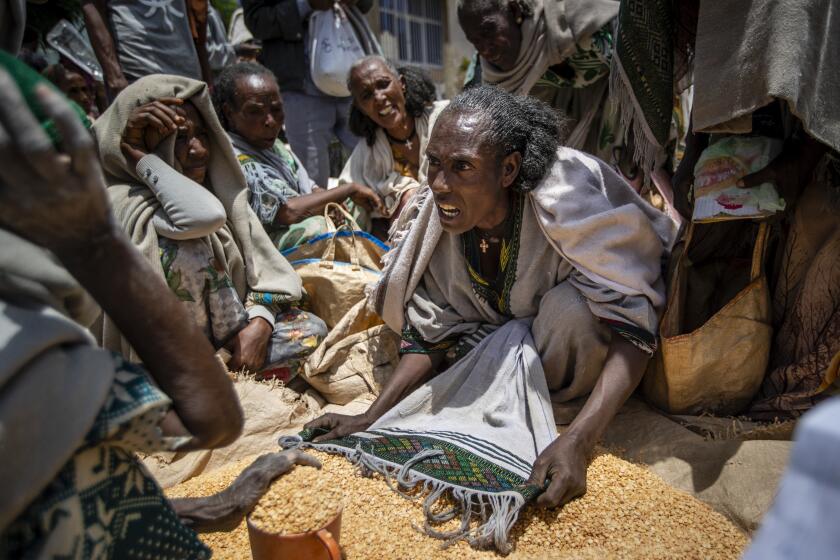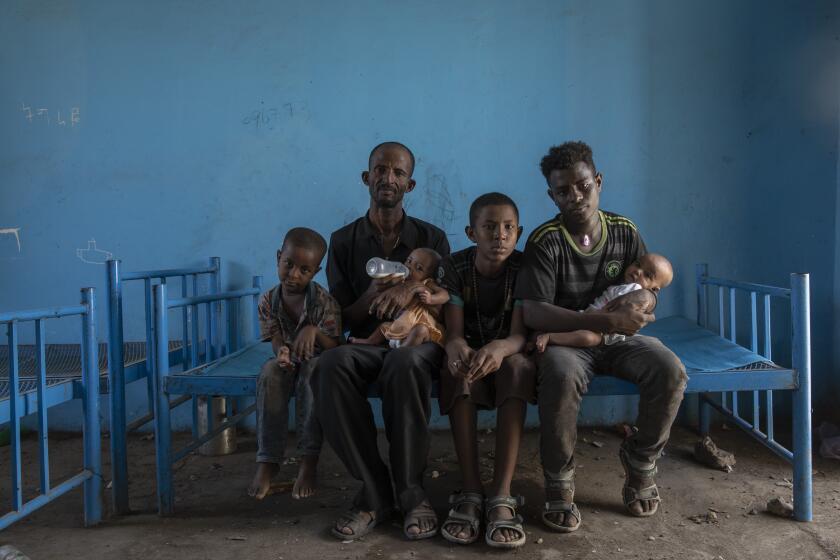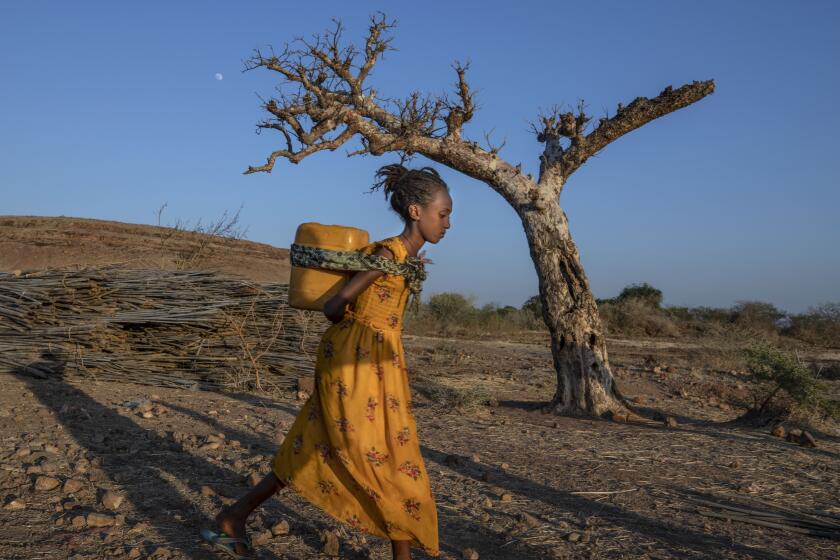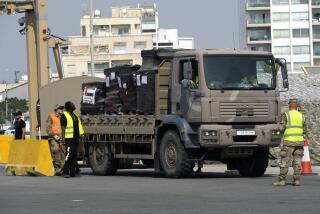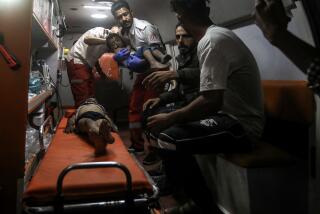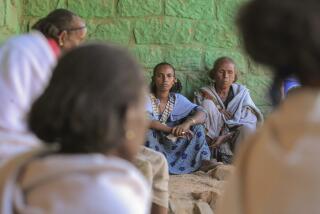Ethiopia denies trying to ‘suffocate’ Tigray region desperately in need of food and aid
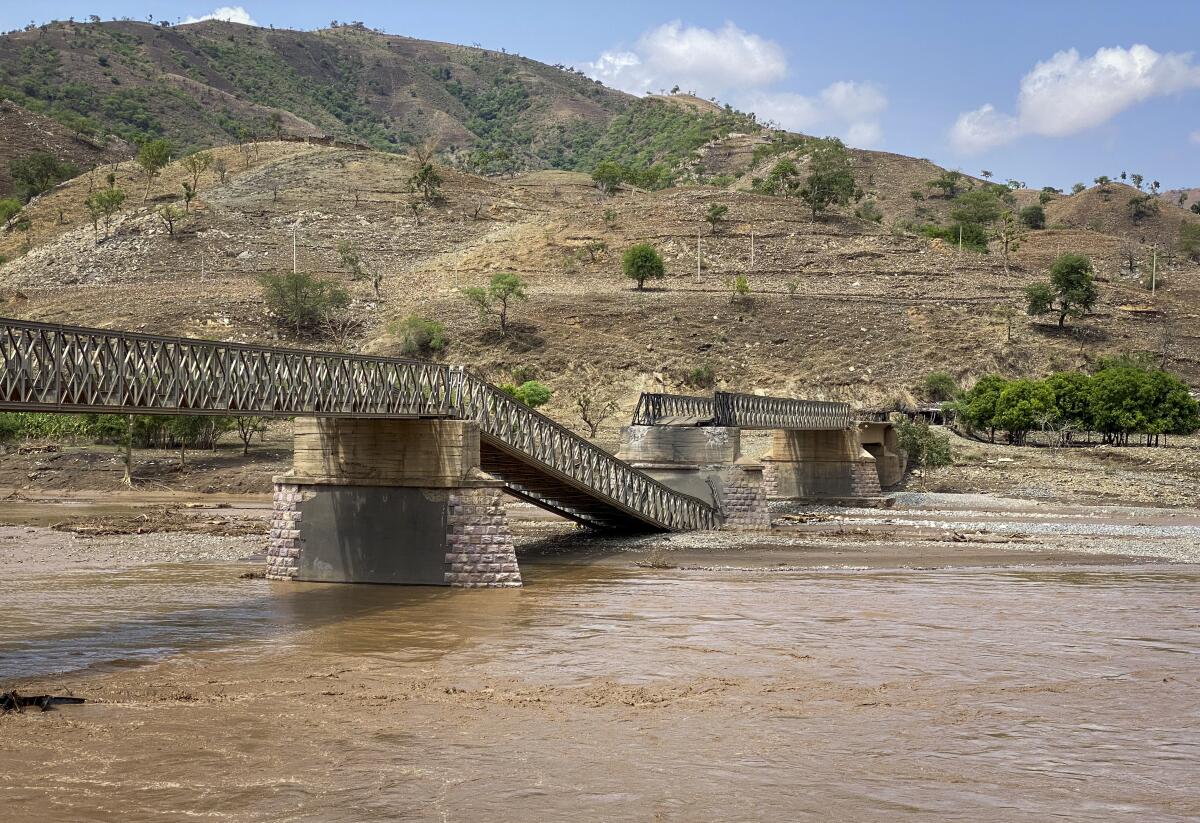
- Share via
NAIROBI, Kenya — Ethiopia’s government on Friday rejected accusations that it’s trying to “suffocate” the people of Tigray by denying them urgently needed food and other aid, as transport and communications links remained severed to the region that faces the world’s worst famine crisis in a decade.
Foreign Minister Demeke Mekonnen spoke to reporters a day after a bridge — crucial for accessing much of the region of 6 million people — was destroyed and the United Nations indicated that special forces from the neighboring Amhara region were to blame. Amhara authorities have occupied western Tigray and forced out hundreds of thousands of ethnic Tigrayans.
“The insinuation that we are trying to suffocate the Tigrayan people by denying humanitarian access and using hunger as a weapon of war is beyond the pale. There is absolutely no reason for us to do so. These are our people,” Demeke said.
Ethiopia’s government blamed Tigray forces for the bridge’s destruction. But an aid worker who traveled to the site said area residents described to him how they saw Amhara special forces placing objects on the bridge and driving away after the blast. “They still seemed in shock at what had happened,” Roger Sandberg, vice president of field operations with Medical Teams International, told the Associated Press.
Sandberg said residents also told him that there was no other way to cross, while Tigray forces conveyed to him that they wouldn’t obstruct aid organizations’ access to the region.
The United Nations Security Council was meeting to discuss Tigray on Friday.
More than 350,000 people face famine in Ethiopia, the United Nations says. It is not just that people are starving; it is that many are being starved.
In a stunning turn earlier this week, Ethiopia declared a unilateral cease-fire on humanitarian grounds while retreating from Tigray forces. But the government faces growing international pressure as it continues to cut off the region from the rest of the world. Aid workers say fuel and other supplies are running low.
In a strikingly outspoken statement, the World Food Program said Friday that a second key bridge leading into Tigray was destroyed Thursday, and none of its flights bringing in U.N. or other aid workers have been allowed by Ethiopia since June 22.
Even before the bridges were destroyed, at least 3,800 metric tons of food had been blocked from reaching parts of western Tigray, World Food Program emergency coordinator Tommy Thompson told reporters in Geneva. He warned that “more people will die” if access isn’t restored, but added that an air bridge might be set up in coming days.
War broke out in northern Ethiopia’s Tigray region at the worst possible time for Abraha Kinfe Gebremariam and his family.
The U.N. agency said trucks are loaded and ready to replenish its nearly exhausted food stocks in Tigray, where 5.2 million people need emergency food aid. “We’ll be out of food in the northwest by this weekend,” Thompson said.
Up to 900,000 people in Tigray are facing famine conditions, the United States has said. A new U.N. humanitarian update issued late Thursday said that “the blackout of electricity, telecommunications, and internet throughout Tigray region will only exacerbate the already dire humanitarian situation.”
Ethiopia’s foreign minister said the government has a road map for dialogue to resolve the Tigray crisis that’s expected to include “rank-and-file members of the [Tigray People’s Liberation Front] who show readiness to choose a peaceful path.” But Tigray forces, recently designated by Ethiopia as a terrorist group, now control most of the region and have demanded that Ethiopia resume basic services before any talks.
“A cease-fire doesn’t mean cutting a region off power or destroying critical infrastructure,” European Union foreign policy chief Josep Borrell tweeted on Friday. “A credible cease-fire means doing everything possible so that aid reaches the millions of children, women and men who urgently need it.”
The security situation in Tigray was generally calm after the retreat of Ethiopian forces and those of neighboring Eritrea, who have been accused by witnesses of some of the worst atrocities in the war. Officials with Eritrea, an enemy of Tigray leaders after a 1998-2000 war along their border, have not responded to requests for comment.
An L.A. Times freelancer was assaulted and had her laptop stolen after she reported on rape in Ethiopia’s Tigray conflict.
Amhara authorities have warned Tigray forces against trying to retake the region’s western areas. But the Tigray forces spokesman told the AP this week they would “liberate” the region from “enemies,” and thousands of fighters were seen heading west.
Ethiopia’s government has said the cease-fire will last only until the crucial farming season in Tigray is over, meaning September. But the World Food Program said farmers have already missed the peak planting month of June because of seed and fertilizer shortages.
More to Read
Sign up for Essential California
The most important California stories and recommendations in your inbox every morning.
You may occasionally receive promotional content from the Los Angeles Times.
